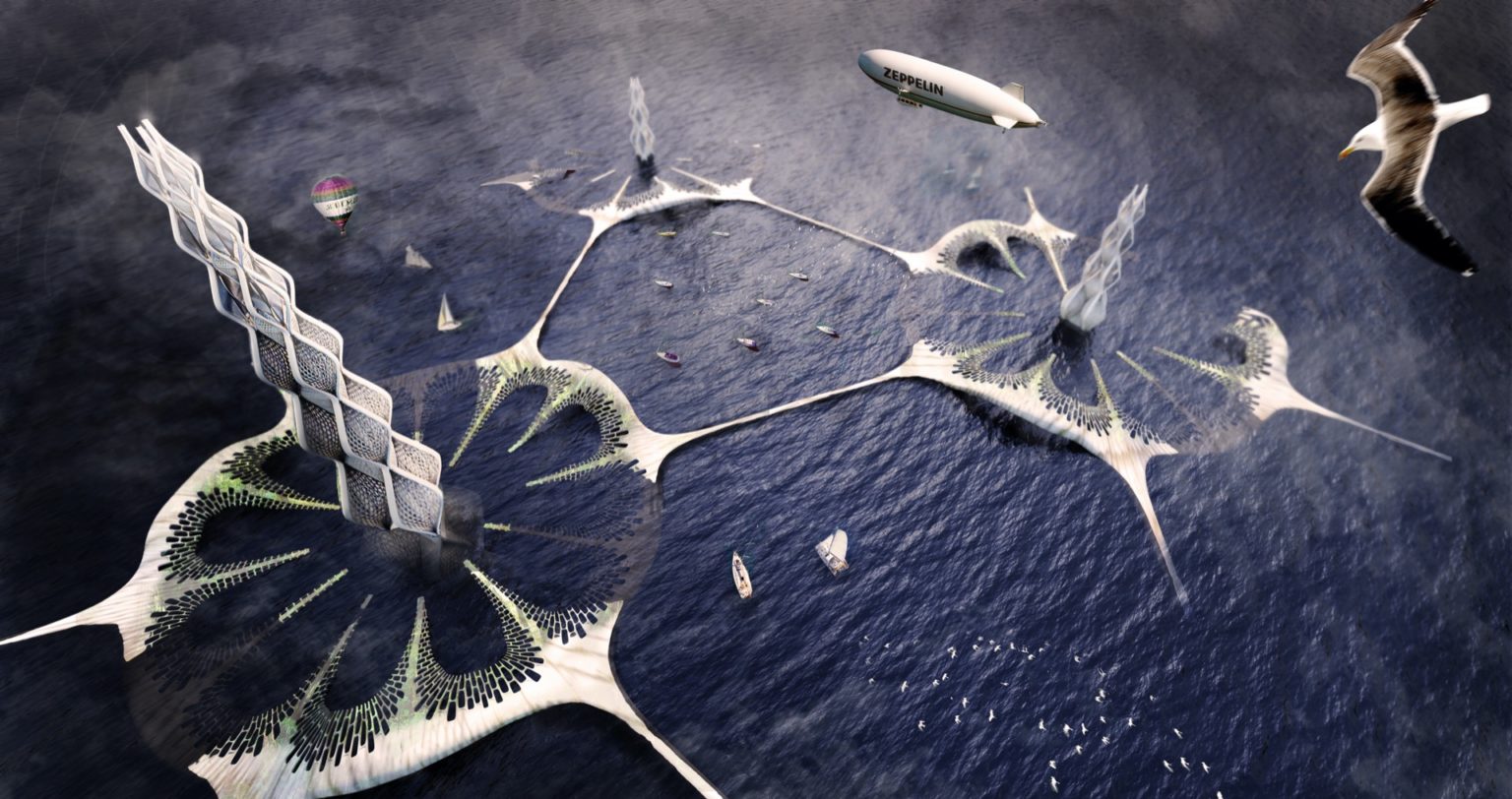Rising Mussel
International Architecture Competition
Fondation Jacques Rougerie
WINNER of the 2021 GRAND PRIX
Architecture and Innovation for sea
Design Team: Karim Najjar, Rames Najjar, Mihai Spanache, Iurii Suchak, Atanas Zhelev
Consultants: Robert Klar, Nadja Najjar
Concept
Nature’s structures are determined by growth, self-organization and decay. It is the balance between construction and de-construction, between emergence and decay that determines their form. Natural phenomena combine stability and fragility. The basic module of the building that is derived from a seed or the simple organism a diatom .... where form is rationalized by the determination of growth, grouping and efficiency.
From the first moment simple organisms are self-sufficient. Their forms pronounce the possibility of growing by grouping or expanding at the first stage. The next step is determined by conquering new territories.
From the first moment simple organisms are self-sufficient. Their forms pronounce the possibility of growing by grouping or expanding at the first stage. The next step is determined by conquering new territories.


The concept of the building is based on self-sustaining processes of microorganisms such as a diatom. The act of building, the human intervention, is reduced to its possible minimum. Just like in nature where growth is the balance between efficiency and time, the initial forces are reduced to a minimum. The building process starts with the installation of a windmill for producing energy that drives the growing process of the floating building. (see technical description and illustration)
The building is in a state of constant growth as dwellers are acting more like gardeners than like architects or constructors. Under the surface, the process of petrifying is constantly ongoing.
Parts of the underwater structures serve the whole building as big buoy or pontoon, which are braced to the ground of the ocean. (see technical description and illustration). When another buoy below the existing one is grown, the building rises with the surrounding architecture. Above sea level, the buoy serves as reservoir for drinking water and hydraulic energy storage (See technical description and illustration) The other units of the building which surround the buoy have multiple use. Like in different quarters of a city, each unit conceals different functions: living, production, urban farming, recreation etc.
The building is in a state of constant growth as dwellers are acting more like gardeners than like architects or constructors. Under the surface, the process of petrifying is constantly ongoing.
Parts of the underwater structures serve the whole building as big buoy or pontoon, which are braced to the ground of the ocean. (see technical description and illustration). When another buoy below the existing one is grown, the building rises with the surrounding architecture. Above sea level, the buoy serves as reservoir for drinking water and hydraulic energy storage (See technical description and illustration) The other units of the building which surround the buoy have multiple use. Like in different quarters of a city, each unit conceals different functions: living, production, urban farming, recreation etc.





© Najjar Najjar Architects. All rights reserved.

